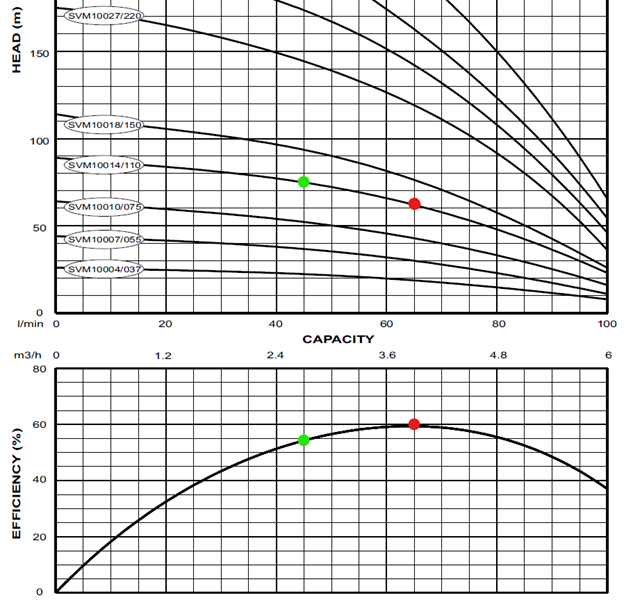We get this question a lot. There are some basic questions that we always ask our customers. Firstly, we need to know if the borehole has been tested for its delivery yield.
Why test a borehole for its delivery yield? The main reason for this, is to establish how quickly water replenishes the borehole. The graph below shows a borehole pump that has been run for only a short amount of time. One can see how the water level is pulled down when the pump starts, and how the curve slopes down to the right as the water is pumped out. Once the pump is switched off, the borehole starts to “recover”. With this data, the technical team on our team can determine the amount of water that can be pumped from a borehole without the risk of running your pump without water.

Information that is required to determine the size of the pump is as follows:
- Depth of the borehole
- At what level is the water from the top
- Size of the borehole (4”, 6” or 8”)
- Amount of water per min, hour or daily to be pumped to the surface
Pump calculation is always done from the water level in the borehole. For instance, if the borehole is 80m deep, and the water is at 63m from the surface, we will use 63m to determine the pump size. We will suspend the pump at 75m to ensure that small rocks and debris are not sucked up by the pump. Let’s look at the graph below:
At a depth of 63m (indicated by the red dots), the Franklin SVM10014/110 will provide 65 l/min (3900 l/hr). Should the water level in a drought period drop to 75m (indicated by the green dots) and enough water is available, this pump will still provide 45 l/min (2700 l/hr). We must also look at the efficiency curve, which still shows us that we are within in safe operating conditions for this pump.
If the borehole has not been tested, it is rather difficult to know at which rate the borehole can be pump safely. Should this data not be available, we would recommend pumping the minimum that is required. Luckily two “smart boxes” has been developed to protect borehole pumps and motors. The Franklin Subtronic and the DAB Guardian has been developed to provide a run dry protection. This protection is done by mea
ns of the unit measuring the amps. Once the amps start to decrease the unit will automatically switch off the pump to protect it from running dry.
Before selecting the biggest motor available, always keep in mind that should you want to run your borehole from your solar system in the future, single phase motors have a high startup amperage that might trip your system. The bigger the pump, the higher startup.
If you have any other questions, feel free to contact our technical team or leave a comment below.


I have dug a borehole (water struck at 46m, borehole depth 60m, flow rate estimated at 1.8 cubic meters). I will be pumping the water to a tank that is situated 110 metres away (steepness and height of tank about 5m). Please recommend a suitable borehole pump